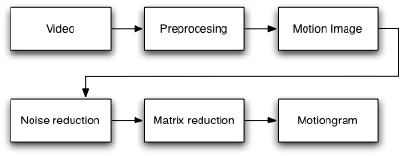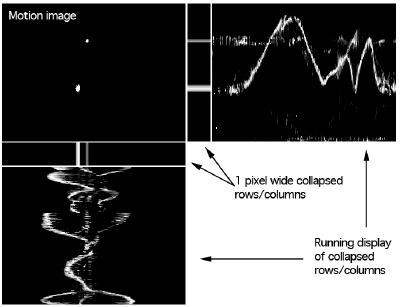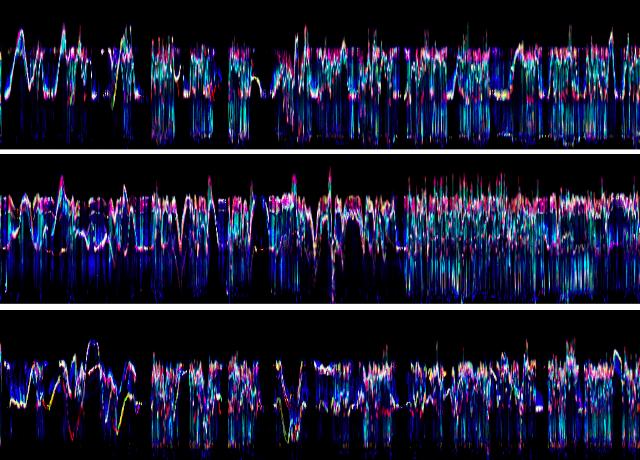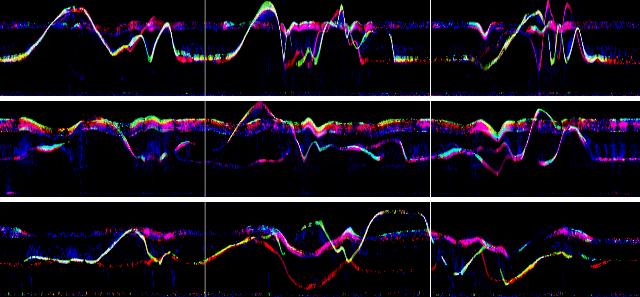Challenge
Traditional keyframe displays of videos are not particularly useful when studying single-shot studio recordings of music-related movements, since they mainly show static postural information and no motion.
Using motion images of various kinds helps in visualizing what is going on in the image. Below can be seen (from left): motion image, with noise reduction, with edge detection, with “trails” and added to the original image.
Making Motiongrams
We are used to visualizing audio with spectrograms, and have been exploring different techniques for visualizing music-related movements in a similar manner. Motiongrams are made by calculating the means of the rows and columns of the motion image (difference between consecutive frames) and plotting them over time.
No motion tracking or other computer vision techniques are applied. A motiongram is simply a reduction of the video stream and is thus a good starting point for further quantitative and qualitative analysis.
Using Motiongrams
Motiongrams allow for quick navigation in video material and for comparative analysis of motion qualities. Although quite rough, it is easy to see differences in the quantity of motion and similarities in upward/downward patterns between motion sequences.
Below is a motiongram of a five minute video of free dance movements to music. The dancer moved to five different musical excerpts (marked a-e) and each excerpt was repeated three times (marked 1-3).
We use motiongrams in comparative studies. Below are motiongrams of three dancers moving freely to the same musical excerpts.
If we zoom into the image and look at the first 40 seconds of the sequence displayed above, it is possible to follow the trajectories of the hands (because of the yellow and read gloves) and head (pink due to saturation), as well as the body (appears blue due to the background).
Future Work
A number of issues will have to be adressed in future research:
- 3D motiongrams showing both horizontal and vertical motion.
- Combined displays with audio, video and sensor information.
- Improve efficiency.
Acknowledgments
Rolf Inge Godøy and Marcelo M. Wanderley for valuable feedback and support. This research is funded by the Norwegian Research Council.






